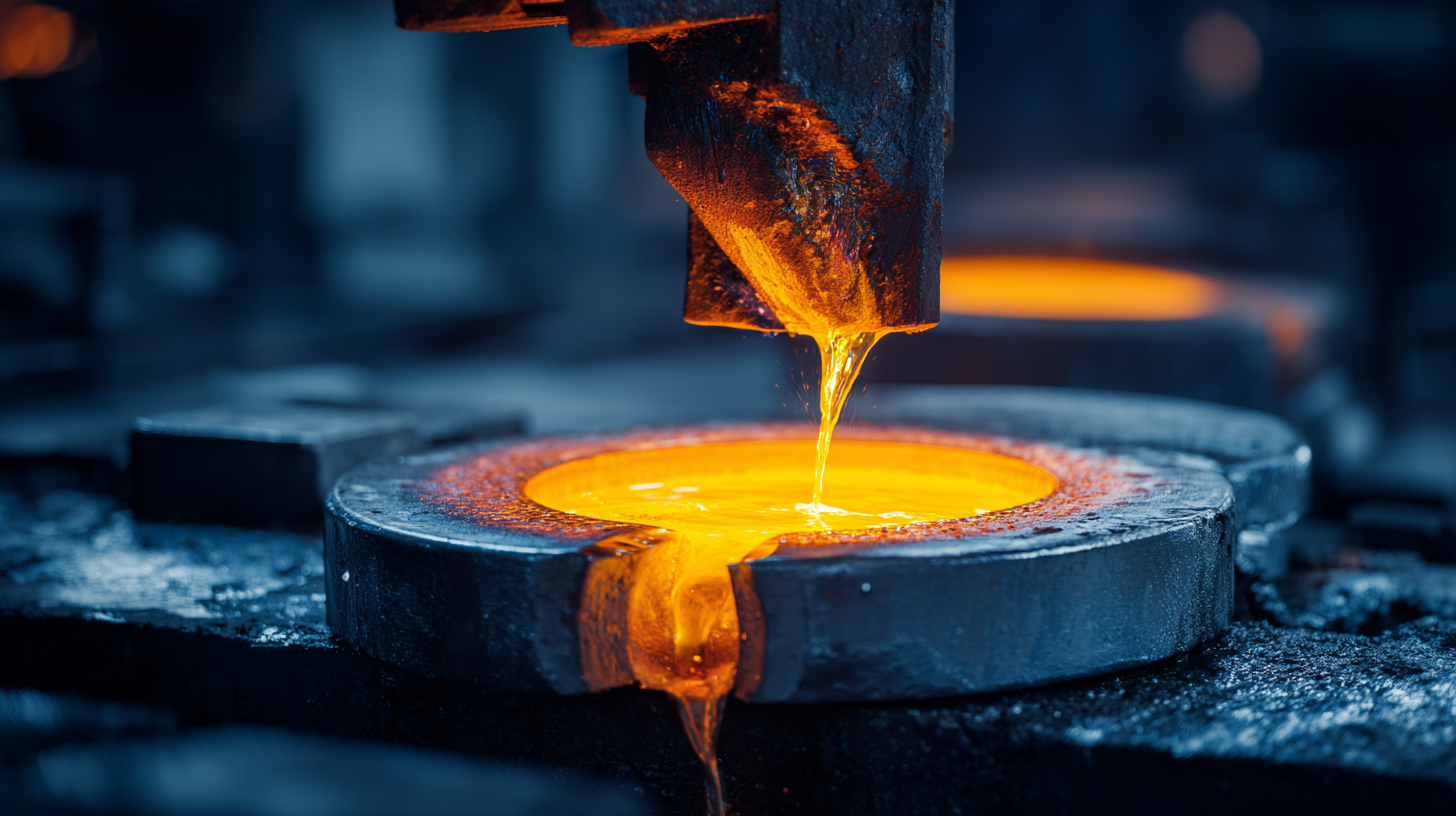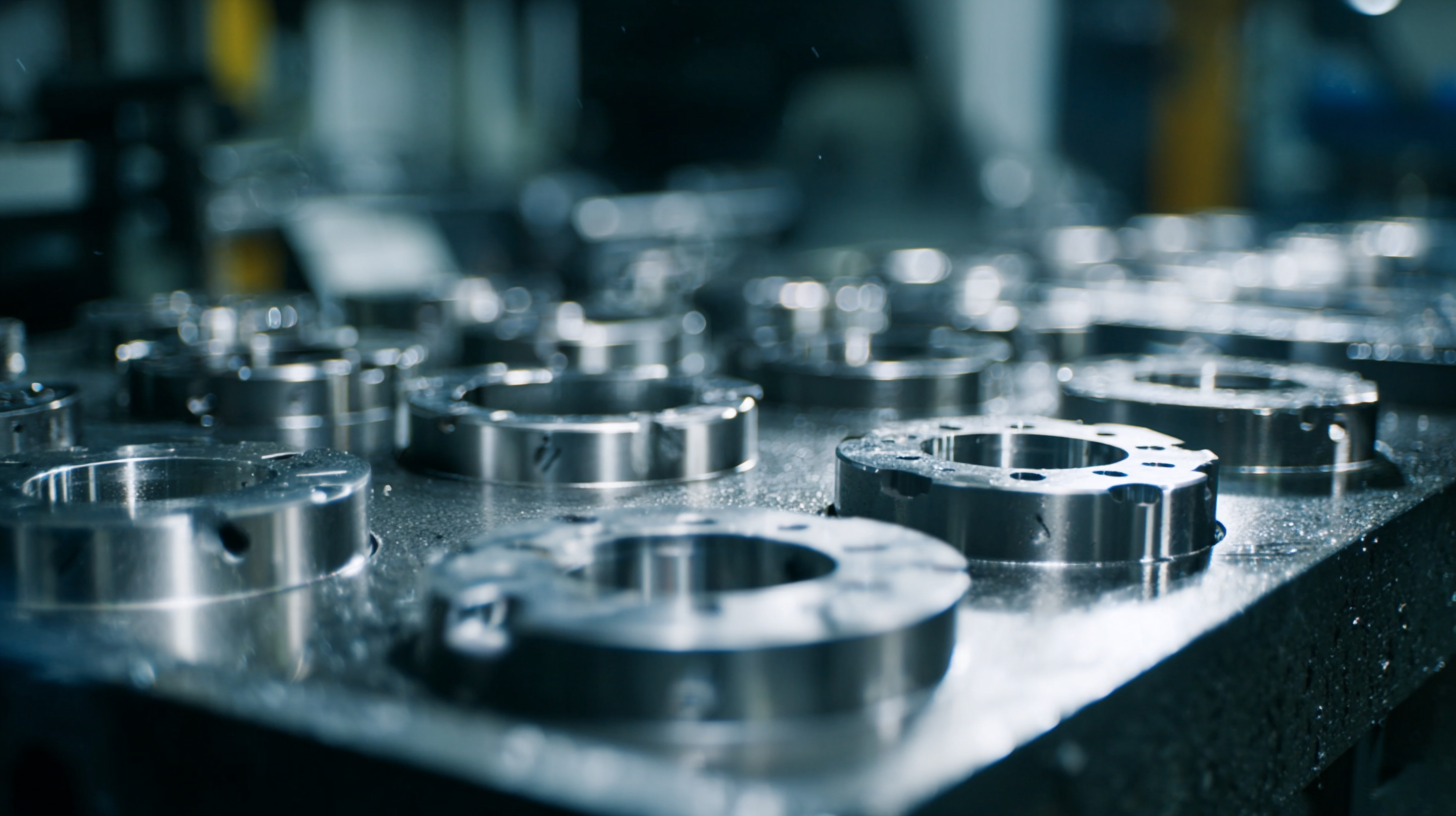Leave Your Message
-
Phone
-
E-mail
The landscape of global supply chains is undergoing a transformative shift, particularly in the manufacturing segment, where the demand for high-quality forged aluminum parts is on the rise. According to a recent report by MarketsandMarkets, the global aluminum forged products market is projected to reach USD 30.94 billion by 2026, growing at a CAGR of 6.5% from 2021. This surge can be attributed to the lightweight yet robust nature of forged aluminum parts, making them ideal for various industries, including automotive, aerospace, and construction. As manufacturers strive to enhance operational efficiency and sustainability, China’s advanced manufacturing capabilities position it as a leading partner in supplying these critical components. With a focus on quality and innovation, the future of forged aluminum parts is set to not only revolutionize production processes but also redefine global collaboration in supply chains.

The evolution of forged aluminum parts in modern manufacturing reflects a significant shift towards advanced technologies and sustainable practices. Recent innovations in forging techniques, such as precision forging and additive manufacturing, have greatly enhanced the quality and performance of aluminum components. These advancements not only improve the mechanical properties of the parts but also streamline production processes, reducing waste and energy consumption. As manufacturers seek to optimize their operations, the integration of cutting-edge technology is becoming essential for maintaining a competitive edge.
Sustainability and green manufacturing are key drivers of growth in the forged aluminum market. The industry is increasingly prioritizing environmentally friendly practices, from sourcing materials to minimizing carbon footprints during production. Companies are adopting recycled aluminum to create forged parts, significantly lowering the environmental impact compared to traditional methods. As global regulations become stricter and consumer demand for sustainable products rises, the commitment to green manufacturing will likely shape the future of forged aluminum parts, leading to more responsible supply chains and innovative solutions across various sectors.
| Dimension | Value | Notes |
|---|---|---|
| Global Market Size (2023) | $24 Billion | Estimated to grow at 5% CAGR |
| Leading Regions | North America, Europe, Asia-Pacific | Significant demand in automotive and aerospace |
| Primary Applications | Automotive, Aerospace, Industrial Equipment | High strength-to-weight ratio benefits |
| Key Benefits | Lightweight, High Durability, Corrosion Resistance | Enhances performance and sustainability |
| Manufacturing Techniques | Hot Forging, Cold Forging, Precision Forging | Advancements in technology improving efficiency |
| Challenges | Cost of raw materials, Energy consumption | Sustainability concerns being addressed |
The future of forged aluminum parts is set to reshape global supply chains, particularly as advancements in technology and sustainability take center stage. With the global aluminum forging market expected to grow significantly, driven by innovations such as 3D printing and advanced alloying techniques, manufacturers are no longer limited by traditional methods. Reports indicate the market could reach over $16 billion by 2027, highlighting a robust demand for lightweight and durable materials across various industries, including automotive and aerospace.
Key characteristics of different types of forged aluminum products include their strength-to-weight ratio and resistance to corrosion. These properties make forged aluminum an ideal choice for critical applications that require both performance and longevity. As companies turn towards greener manufacturing processes, the adoption of environmentally friendly practices will play a crucial role. Many manufacturers are now focusing on using recycled materials and implementing energy-efficient technologies, ultimately contributing to sustainable supply chains while meeting the increasing consumer demand for greener products. Such trends underscore the importance of forging as a cornerstone of innovation in modern manufacturing.
The applications of forged aluminum parts across various industries are rapidly expanding, driven by technological advancements and a growing focus on sustainability. The global aluminum forging market, valued at approximately $22.71 billion in 2023, is expected to grow to $31.73 billion by 2029. This growth is largely influenced by the increasing demand for lightweight materials in sectors such as automotive and aerospace, where reducing vehicle weight is critical for improving fuel efficiency and lowering emissions.
In the automotive sector, the China automotive parts aluminum die casting market is projected to reach $9.58 billion by 2025, highlighting the shift towards aluminum-intensive designs. Meanwhile, Japan’s market is anticipated to grow at a compound annual growth rate (CAGR) of 7.70%, reaching $5.12 billion by 2033. These figures underscore the vital role that forged aluminum parts play in manufacturing, enabling car manufacturers to enhance vehicle performance while also adhering to stringent environmental regulations. The push for green manufacturing practices emphasizes the importance of sustainable materials, with the forging industry poised to meet these challenges through innovative production methods.

The selection of the right forged aluminum components for your project is critical, particularly in an era where technological advancements and sustainability goals are reshaping the industry. Reports indicate that the global aluminum forging market is projected to grow at a CAGR of over 5% through 2025, driven by increasing demand for lightweight and durable materials in sectors like automotive and aerospace. Innovations in forging processes, such as precision forging and rapid prototyping, enhance the performance and reliability of these components, making them ideal for high-stress applications.
As companies strive for greener manufacturing practices, the aluminum forging industry is also responding by adopting more sustainable processes. The use of recycled aluminum can reduce energy consumption by up to 95%, a significant improvement over traditional aluminum production methods, which aligns with global sustainability goals. Furthermore, manufacturers are increasingly investing in energy-efficient technologies that not only lower emissions but also enhance the overall efficiency of production lines. With the market continually adjusting to meet evolving consumer preferences and regulatory requirements, selecting the right forged aluminum part involves considering both its performance characteristics and its environmental impact.

The advent of advanced manufacturing technologies is reshaping global supply chains, particularly in the realm of forged aluminum parts. According to a recent report by MarketsandMarkets, the advanced manufacturing market is projected to reach $372 billion by 2025, with a compound annual growth rate (CAGR) of 12.4%. This growth is primarily fueled by innovations in processes like additive manufacturing, robotics, and automation, which enhance the efficiency and precision of aluminum forging processes.
Moreover, the implementation of Industry 4.0 practices is revolutionizing how supply chains operate. A study by McKinsey indicates that companies adopting digital upgrades can increase productivity in manufacturing by up to 30%. As manufacturers increasingly utilize data analytics and IoT solutions, they can optimize production schedules and inventory management, leading to reduced lead times and improved customer satisfaction. This transformation not only increases competitive advantage but also enables companies to respond more flexibly to market demands, significantly altering the dynamics of global supply chains for forged aluminum components.
The chart below illustrates the projected market growth of forged aluminum parts and its impact on global supply chains over the next five years. The data highlights the increasing adoption of advanced manufacturing technologies and the anticipated demand in key industries.
